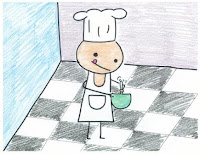Dear Master’s Programs student,
No one would try to bake a cake
with steps in the wrong order (e.g. icing before baking), or skipping steps
altogether (e.g. not mixing the batter).
So why do we try to write a paper in this same haphazard manner? Probably because many of us don’t see writing
as a process, but as one act:
sitting at the keyboard to plan, write, and edit simultaneously. Taking the time to move through the process
of writing will yield better papers—and better grades.
Below you’ll find steps one
through three to a better paper.
Step 1: Understanding the
prompt (or know your recipe)
Just
as a cake recipe differs from a pie recipe, the directions for a personal
reflection aren’t the same as literature review directions. Make sure you understand exactly what your
professor is asking for, and be sure you’re addressing all aspects of your
assignment.
Step 2: Brainstorm
(or go grocery shopping)
You
can’t make a cake without breaking a few eggs, and you can’t break those eggs
if you don’t have them yet. Before you
start writing, be sure you’ve spent the time and brainpower to gather those
“eggs,” or ideas. It’s easy to skip over
this step, but you must start with quality ingredients for a good product. Don’t write what’s obvious; do the real work
of pondering the issues your paper will address.
Step 3: Organize (or mix)
A
good chef doesn’t just throw everything together in a bowl; instead, she
carefully mixes dry and wet ingredients separately, then combines them with
skillful whisking. In the same way, organizing
your paper is more than just writing your ideas in the order in which you
think of them. It’s important to
sequence your paragraphs in a logical way that will help (not hinder) your
reader’s understand of your points.
Next week: steps four to
six.
Until then, happy writing!
James


